Key takeaways:
- Diversity in coalition building enhances problem-solving by bringing various perspectives and experiences to the table.
- Effective communication and alignment of goals are critical for fostering innovation and collaboration among coalition members.
- Empathy and flexibility are essential in responding to challenges and understanding the needs of stakeholders.
- Future goals should focus on engaging a wider range of stakeholders, enhancing training for coalition members, and ensuring sustainability in funding efforts.
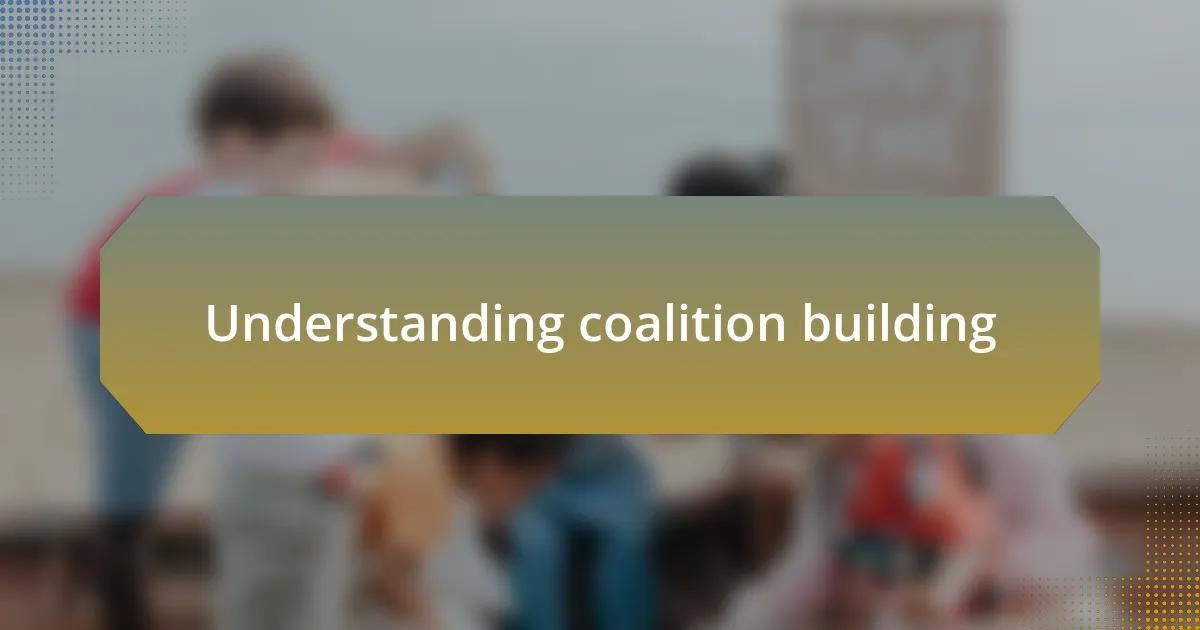
Understanding coalition building
Coalition building is essentially about coming together for a shared purpose, and I vividly remember the first time I witnessed its power. A few years back, I joined a local initiative aiming to address homelessness in our community. Sitting around the table with different stakeholders—from local businesses to social workers—each person brought their unique perspective. It struck me how our diverse backgrounds formed a tapestry of solutions, highlighting that the strength of a coalition lies in its diversity.
When I think about what makes coalition building effective, I can’t help but remember those early brainstorming sessions. They were filled with passionate discussions and sometimes heated debates, but it was this very tension that sparked innovative ideas. Isn’t it incredible how collaboration can lead to breakthroughs that one entity alone might never achieve? The emotional investment in our cause created a sense of urgency, propelling us to take tangible actions together, rather than apart.
However, creating a coalition isn’t always smooth sailing. I learned that trust is the foundation of any successful partnership. There was a moment when a misunderstanding nearly derailed our efforts; it required open communication and empathy to mend the rift. Have you ever experienced how a single moment of vulnerability can turn a challenge into a stepping stone? In this way, building coalitions not only unites us for a common goal but deepens our understanding of each other, making the journey transformative for everyone involved.
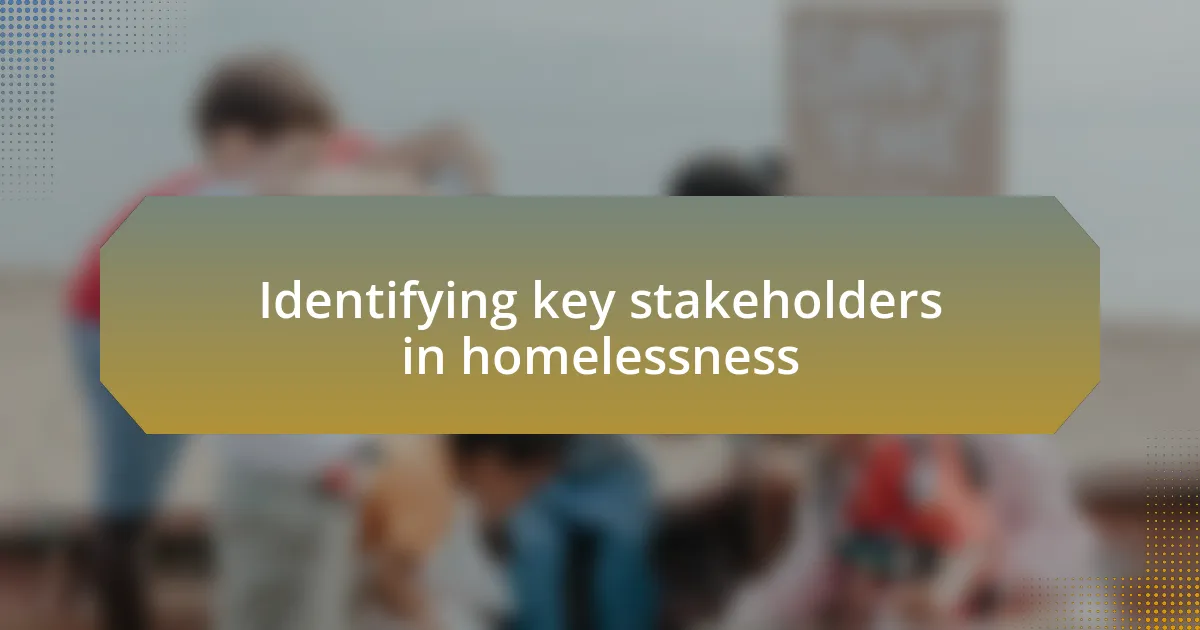
Identifying key stakeholders in homelessness
Identifying key stakeholders in homelessness is a crucial step in creating effective coalitions. I remember attending a community meeting where we mapped out everyone involved in the homelessness issue—from policymakers to faith-based organizations. It was eye-opening to realize just how interconnected our roles were; each stakeholder not only brought resources but also a unique understanding of the challenges faced by the homeless. Have you ever considered how one person’s influence can ripple through an entire system?
When I think back to our discussions, it became clear that engaging people from diverse sectors wasn’t just beneficial; it was vital. For instance, inviting the voices of those who had experienced homelessness firsthand added a layer of authenticity that data alone couldn’t provide. Their stories resonated deeply within our coalition, reminding us of the human aspect behind the statistics. How many stories do we often overlook in our quest for solutions?
Reflecting on the journey of identifying stakeholders, I learned to embrace the unexpected allies we found along the way. A local business owner stepped up, expressing a desire to help, despite having no prior experience with homelessness initiatives. The willingness of such stakeholders to listen and learn had a profound impact on our coalition dynamics. Have you ever been surprised by who might offer a helping hand?
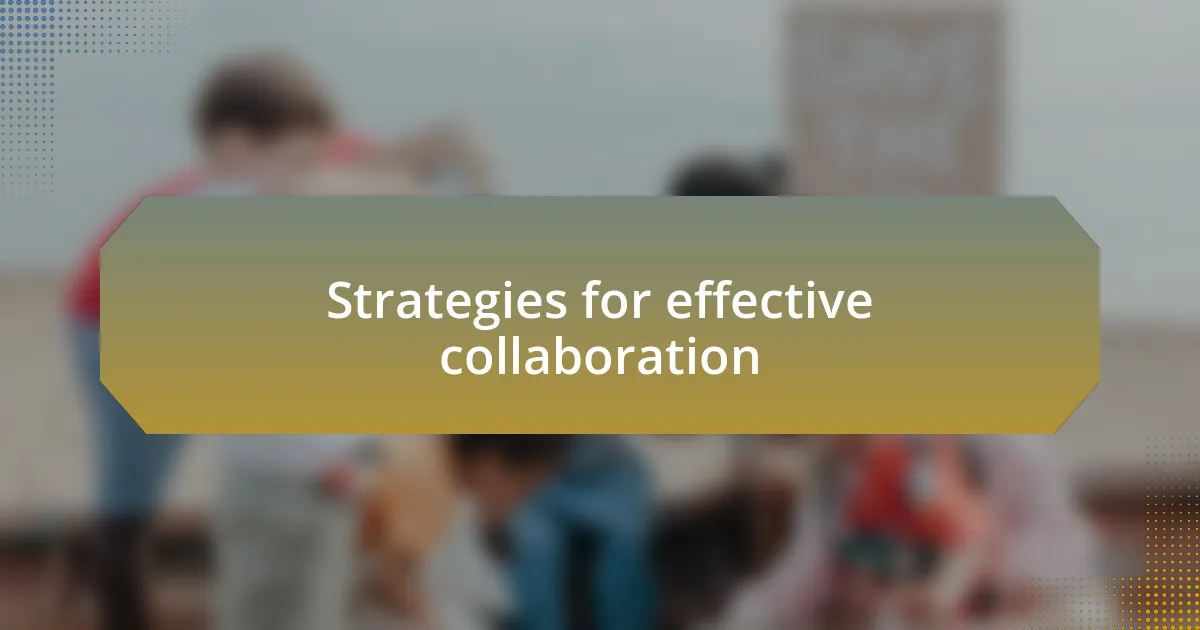
Strategies for effective collaboration
Building a successful coalition hinges on establishing clear communication protocols. I recall a pivotal moment when we implemented a shared online platform for updates and brainstorming. It transformed the way we interacted; rather than waiting for monthly meetings, we could exchange ideas instantly. Have you ever noticed how timely communication can energize a group and drive momentum?
In my experience, aligning goals among coalition members is equally essential. During one partnership, we took the time to host a retreat where we mapped our individual objectives against a common vision. This exercise not only fostered mutual understanding but also spurred innovation in our strategies. How often do we pause to ensure everyone is on the same page before plunging into action?
Lastly, I’ve found that celebrating small wins can significantly enhance collaboration. During our first outreach event, we had a modest turnout, but my team made it a point to acknowledge our efforts and the stories we gathered. It was an uplifting moment that reinforced our commitment to the cause. Can you remember a time when celebrating progress motivated your collaborative efforts?
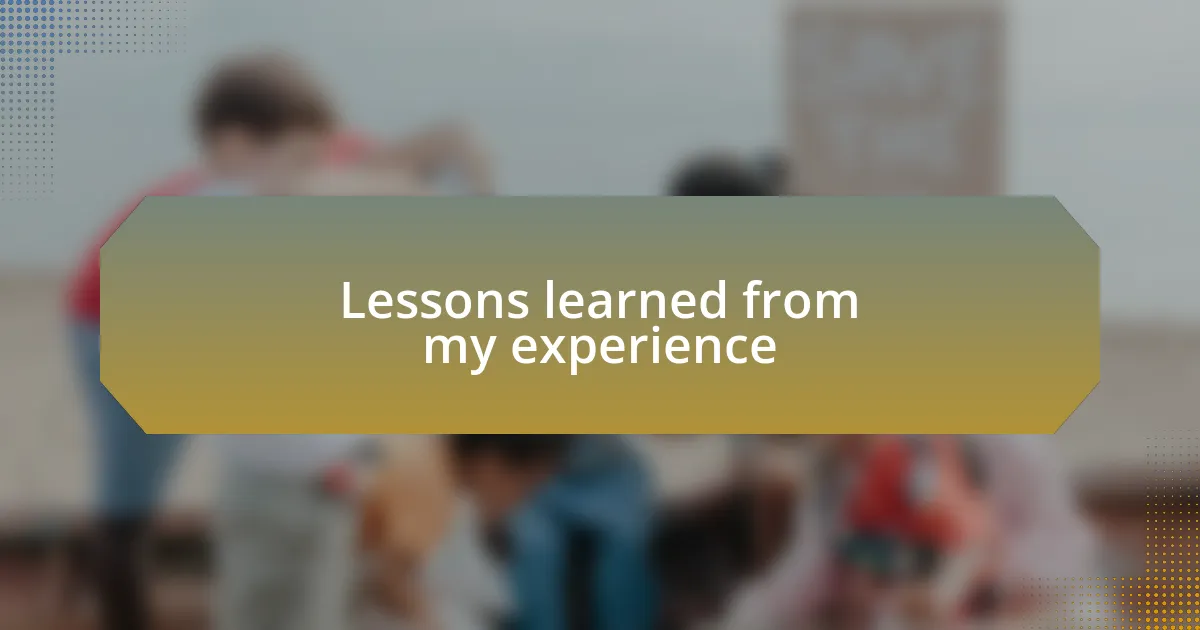
Lessons learned from my experience
Throughout my journey in coalition building, I’ve learned the importance of flexibility. I vividly remember a time when an unexpected issue arose during a critical project phase. Rather than sticking rigidly to our plan, we quickly adapted our strategies. This experience taught me that being open to change, and encouraging my team to do the same, can lead to innovative solutions and stronger collaboration. How often do we fear change instead of embracing it?
Another lesson that stands out to me is the power of empathy. In one of our initiatives, we organized focus groups to hear directly from those experiencing homelessness. I was deeply moved by their stories, and that connection drove home the reality of our mission. Listening to their needs in a genuine way reshaped our approach, reminding me that understanding different perspectives is crucial for effective coalition work. Have you ever been surprised by what you learn when you truly listen?
Lastly, I learned that resilience is critical in coalition-building efforts. There were moments when progress seemed painfully slow, and I felt disheartened. However, reminding myself of our shared purpose reignited my passion. Each setback fostered a collective resilience that ultimately strengthened our coalition and renewed our commitment to finding solutions. Can you recall a time when perseverance transformed a challenging situation for you?
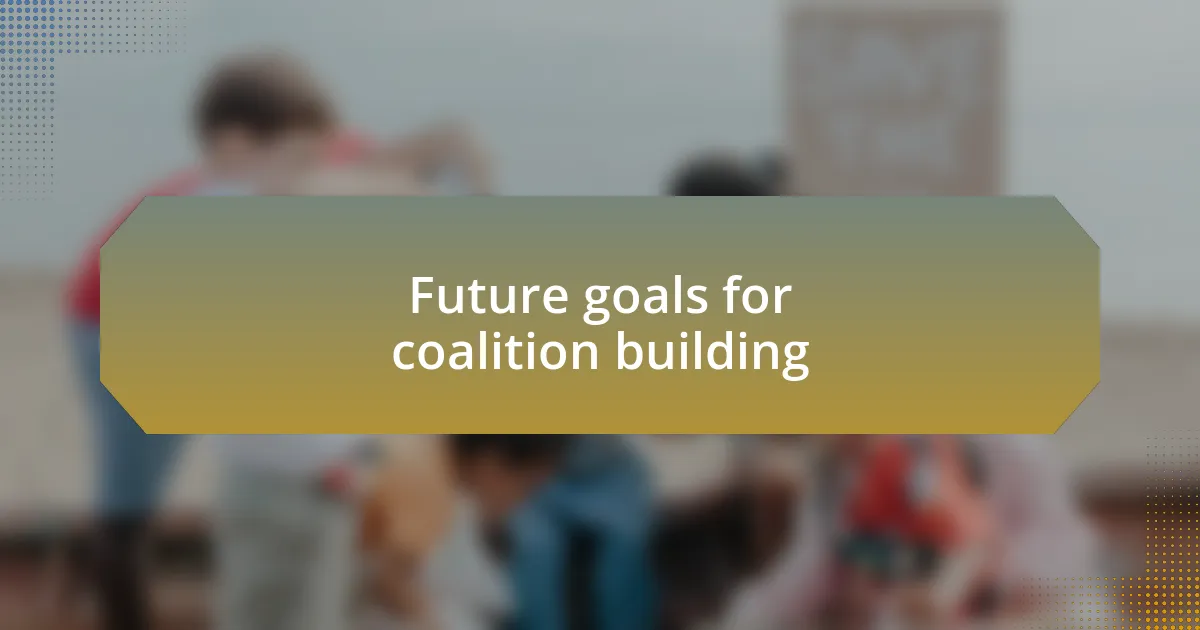
Future goals for coalition building
Future goals for coalition building should revolve around expanding our relationships with diverse community stakeholders. For instance, I envision regular workshops that invite not just service providers but also local businesses, residents, and even those experiencing homelessness. Have you considered how engaging a wider audience could strengthen our common goals?
Another goal is to enhance the training programs for coalition members. I remember a time when our coalition struggled due to differing communication styles among members. By investing in training that focuses on inclusive communication and conflict resolution, we can nurture a more unified front. Isn’t it fascinating how the right tools can shift team dynamics entirely?
Lastly, I believe we must prioritize sustainability in our coalition’s efforts. Reflecting on past experiences, funding has always been a challenge, often dictating our initiatives. To counter this, I propose creating a shared resource pool, where we can collectively approach funding opportunities. Have you thought about how collaborative financial strategies can lead to more stable projects in the long run?